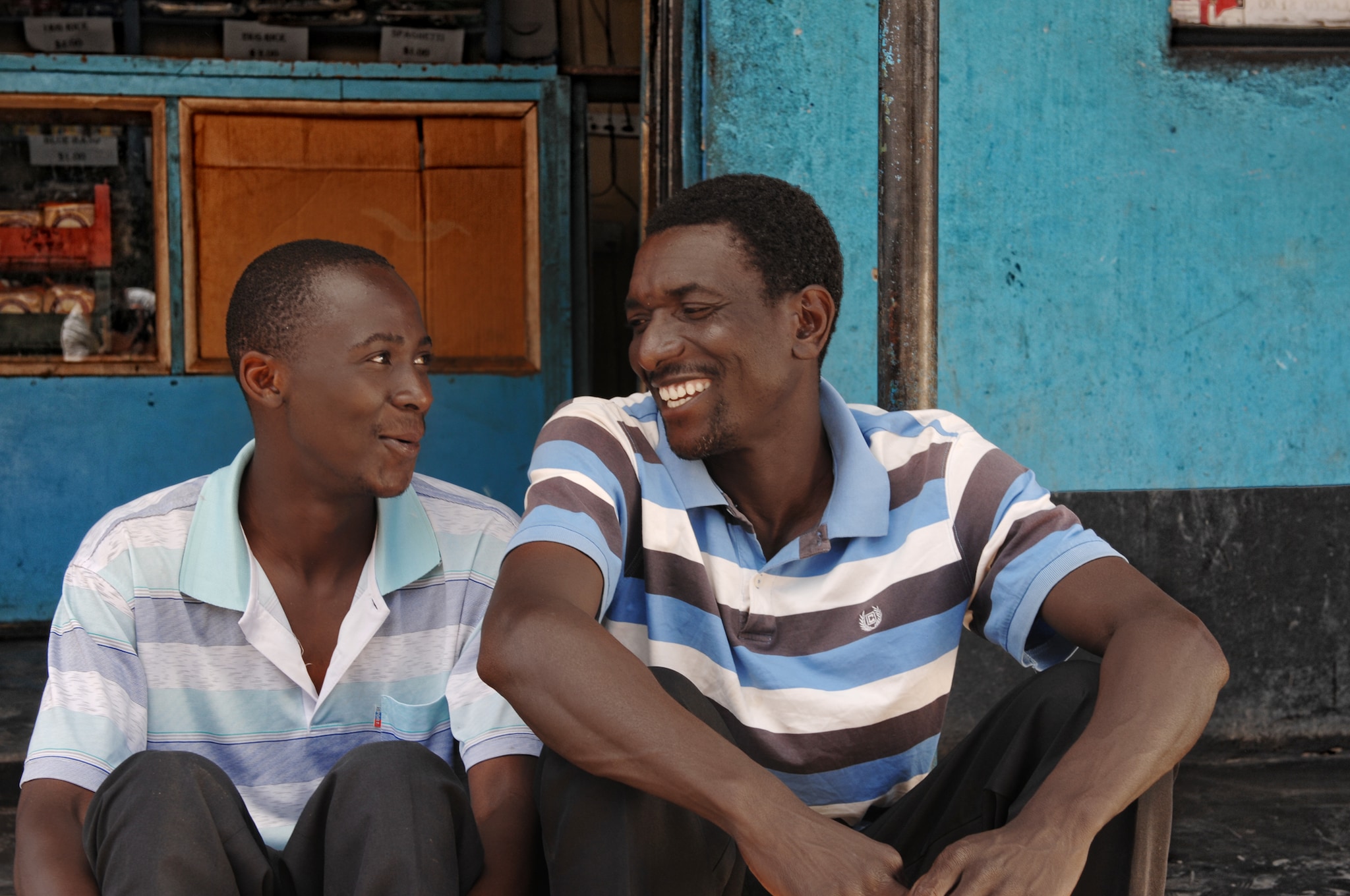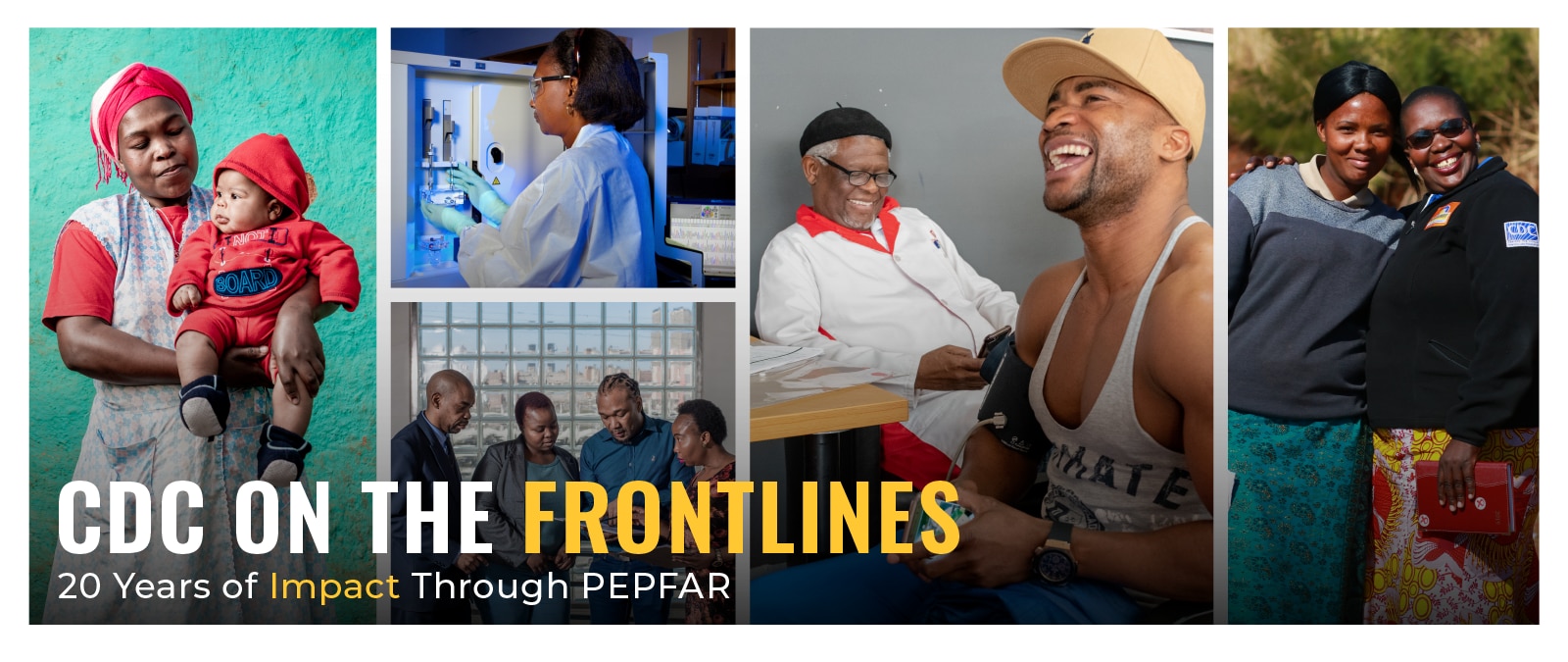South Africa Country Profile

South Africa Country Profile
Discover more about CDC’s work in South Africa by viewing our detailed country profile
Country Overview
In 1989, CDC began working with non-governmental and community-based organizations in the Republic of South Africa to address the HIV epidemic. In 1994, the agency partnered with the government to develop national HIV clinical, ethical, and research guidelines along with HIV and tuberculosis (TB) service delivery programs. Since the launch in 2003 of the U.S. President’s Emergency Plan for AIDS Relief, CDC has strategically focused its support on HIV prevention; integration of HIV and TB screening in clinical cascades; building healthcare workforce capacity, placement, and retention; and enhancing laboratory capacity, health information systems, and disease surveillance and response systems. Additionally, CDC provides technical assistance to South Africa’s National TB Control Program and works to address the challenges of multidrug-resistant TB and TB/HIV co-infection in the country.
Per Capita GNI
$6,780
(2022)
Population (million)
59.89
(2022)
Under 5 Mortality
32.8/1,000 Live Births
(2021)
Life Expectancy
62.3 Years
(2021)
Estimated HIV Prevalence
17.8%
(Ages 15-49): (2022)
Estimated AIDS Deaths
42,000
(Age≥15) (2022)
TB Treatment Success Rate
78%
(2020)
Estimated TB Incidence
513/100,000
(2021)
Estimated Orphans Due to AIDS
720,000
(2022)
TB patients with known HIV-status who are HIV-positive
57%
(2021)
Reported Number Receiving Antiretroviral Therapy (ART)
5,574,940
(Age≥15) (2022)
Strategic Focus
The Centers for Disease Control and Prevention (CDC) South Africa began its collaboration with South African non-governmental and community-based organizations in 1989 to address the country’s growing HIV issues. In 1994, CDC South Africa strengthened its support and began working with the government of South Africa to develop national HIV clinical, ethical, and research guidelines along with HIV and TB service delivery programs. Since the launch of the U.S. President’s Emergency Plan for AIDS Relief (PEPFAR) in 2003, this support rapidly expanded and today strategically focuses on:
- HIV prevention;
- Integration of HIV and Tuberculosis (TB) in clinical cascades;
- Health workforce capacity, placement, and retention;
- Laboratory capacity, health information systems, and surveillance and response systems that monitor HIV, TB, and other diseases of national significance; and
- Creation of a policy and legal framework for a National Public Health Institute (NPHI).
Key Activities and Accomplishments
Data-Driven Policy for Improved Impact: CDC South Africa supports the collection of HIV data through national population-based surveys and support for routine program monitoring systems. Data from multiple sources are analyzed for program improvement. A Quality Improvement team was also recently launched that takes a multi-disciplinary approach to analyzing data and addressing program gaps.
Voluntary Medical Male Circumcision (VMMC): In Fiscal Year (FY) 2017, CDC South Africa supported a total of 229,131 safe, male circumcisions – well over half of the male circumcisions performed in South Africa during the same period.
HIV Case Finding: In FY 2017, a total of 6.9 million HIV tests were administered through CDC support, which exceeded the annual target. The overall HIV testing and counseling (HTC) positivity rate has increased to 8.5%.
Key Populations (KP): CDC South Africa supported prevention activities reached 169,424 people classified as KPs in FY 2017.
DREAMS: Determined Resilient Empowered AIDS free Mentored Safe (DREAMS) uses multiple evidence-based interventions, including post-violence care, parenting/caregiver programs, and facilitates access to existing resources, such as cash transfers and education subsidies, to address the factors that increase girls’ HIV risk.
Scaling up HIV services for TB patients: In the districts supported by CDC South Africa implementing partners in FY 2017, 96% of TB patients were tested for HIV, of whom 63% were HIV co-infected. Of these, 93% received antiretroviral treatment (ART) in addition to TB treatment.
Adult and pediatric treatment: As of 2017, an estimated 85% of people living with HIV in South Africa knew their status, of whom 71% were receiving ART. Of those on treatment, 88% achieved viral load suppression. The National Department of Health (NDoH) and PEPFAR South Africa developed a Treatment and Retention Acceleration Plan, aiming to put an additional two million people on ART by December 2020.
Community Health Workers: CDC South Africa and its partners focus on improved clinic-community engagement, including hiring more Community Health Workers (CHW) and their supervisors (Outreach Team Lead (OTL). The aim of CDC’s efforts is to focus on key HIV and TB outcomes, including HIV testing, linkage to treatment, retention and adherence.
Human Resources for Health for direct service delivery: In order to swiftly increase the number of persons infected with HIV who are on ART, CDC South Africa is placing additional health workers in communities and facilities.
Prevention of Mother-to-Child Transmission: CDC South Africa supported implementing partners, collaborating with the United Nations International Children’s Emergency Fund (UNICEF) and the NDoH, achieved 98% coverage of HIV testing, and 96% treatment initiation for HIV-positive pregnant women in FY 2017. Mother-to-Child transmission of HIV in South Africa recently decreased to 1% at birth.
Laboratory: The CDC South Africa Laboratory Branch supports national programs aimed at increasing laboratory diagnostic capacity and quality to facilitate improved public health laboratory services.

CDC-supported HIV Workshop Transforms the Lives of Men in South Africa
When Nicolous Sithole walked into the Stanza Bopape Community Centre in Mamelodi township in Gauteng Province, he wanted to improve his computer skills. Little did he know, he would gain much more than that. Sithole would walk away from this experience as part of a community of men who were seeking healthier and more meaningful lives.

Healthy and Alive in South Africa; Thanks to Antiretroviral Treatment
Hilda was sick with a persistent cough, weight loss, and fatigue so debilitating it was a struggle to get out of bed. Her children, thankfully, took her to the Winnie Mandela Clinic in Tembisa, east of Gauteng Province in South Africa.

CDC On the Frontlines
Over the past 20 years, the U.S. President’s Emergency Plan for AIDS Relief (PEPFAR) has saved millions of lives as a leader in the global response to two of the world’s deadliest infectious diseases – HIV and TB. As a key implementing agency of the U.S. President’s Emergency Plan for AIDS Relief (PEPFAR), CDC is at the forefront of these global efforts to treat and prevent these diseases.